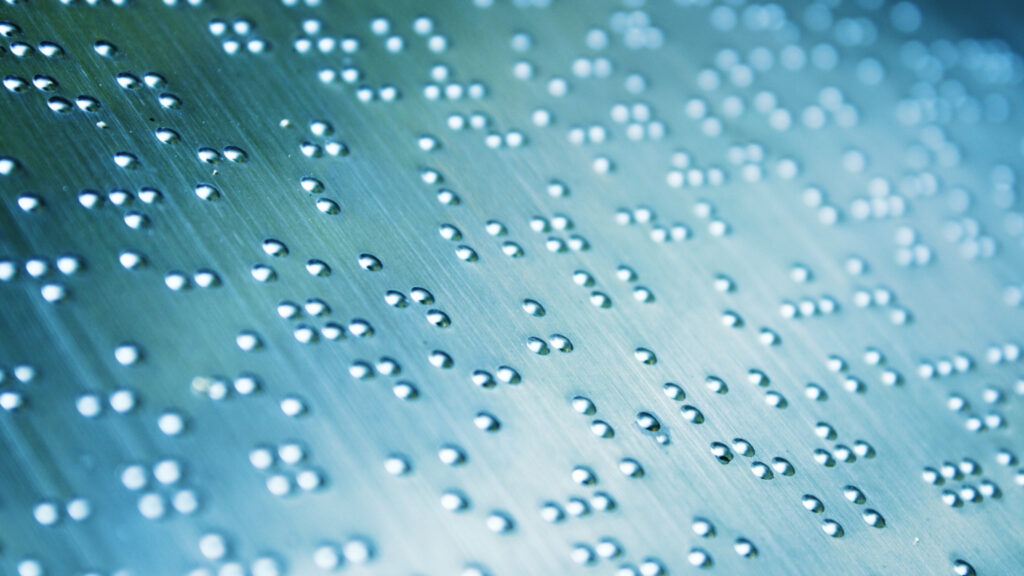Katie Keim was diagnosed with type 1 diabetes in 1967 when she was eight, well before the era of insulin pumps or even reliable home testing. The condition started eating away at her vision 20 years later. By the time she was 36, her sight was completely gone.
Keim had lived an independent life as a child despite her illness. Her summers were spent exploring oceans with her family, not at diabetic summer camps. Blindness, though, changed every aspect of her life — including her ability to manage her diabetes. Her first insulin pump had tactile buttons, but all the pumps that came to replace it had digital screens.
advertisement
“Blind people cannot independently and safely manage our lives through the technology that’s available in home medical devices,” Keim said.
Digital home devices are in a regulatory gray area when it comes to accessibility standards. No agency requires manufacturers to incorporate features for blind folks. Keim and other advocates from the National Federation of the Blind have lobbied lawmakers for years to fix this. Now, federal lawmakers have introduced a bill that would require the Food and Drug Administration to develop rules mandating device makers build accessible products.
Insulin pumps and glucose monitors are a critical focus, as diabetes is one of the leading causes of blindness in the United States. But the bill would also direct the FDA to cover devices like CPAP machines or heart monitors.
advertisement
The bill is not currently a priority for lawmakers even in the health care realm, with Congress focusing on the timelier issues of drug pricing and shortages. Still, the measure has more promise than most by being bipartisan, introduced by Sens. Maggie Hassan (D-N.H.) and Mike Braun (R-Ind.) on the Senate’s health committee. The bill was introduced in 2023 by Rep. Jan Schakowsky (D-Ill.) in the House.
“I’m hopeful that as we see bills that have a focus on health care come forward, I hope even this spring that we might be able to fold this one into it,” Hassan told STAT.
Hassan called the bill “common sense” and said she was in the process of educating fellow lawmakers on the issue. Schakowsky, whose bill has languished in a Republican-led house with just four Republican cosponsors, hopes to win more lawmakers over as well.
“This is not a political issue,” Schakowsky said. “There are people who have sight problems who are Republicans, Democrats, Independents. If we can do something about this, we should. I’m looking forward to getting their help in getting more Republican cosponsors.”
Braun’s office did not respond to a request for comment.
For advocates in the blind community, elevating the issue to the point of a bipartisan bill is a win.
“We always try to work on a non-partisan basis, and we feel that this is a basic issue of safety and health for blind people,” said Chris Danielsen, spokesperson for the National Federation of the Blind.
Danielsen said the NFB has raised their concerns to the Food and Drug Administration before, but the agency decided not to act. The FDA told STAT it does generally comment on specific bills.
The inaccessibility of home digital devices forces blind people to rely on older technologies or on caretakers to operate newer devices for them. Keim had to switch to a flat-screen Tandem pump four years ago, which luckily still has a tactile button for administering insulin doses. But she’s not able to independently change the cartridge, make dosing adjustments, or take advantage of continuous insulin delivery based on her glucose levels.
There are countless features Keim isn’t able to use on her own. She loves to exercise outdoors, living in Honolulu near the famed Diamond Head crater. A friend has to put her pump in “exercise mode” for her. Traveling solo to a conference, she had to ask the hotel clerk to change her pump’s date and timezone — a critical change for her dosing schedule.
Some companies have been receptive to working with the NFB, Keim said. But she’s grown accustomed to companies claiming there’s little demand for accessible insulin pumps. Keim pointed out that many blind users may not complain because they have spouses or other loved ones to help with doses, but would gladly buy devices that give them more autonomy.
“My spouse is blind, and he’s afraid of needles,” Keim said. “He’s no help. And I’ve done this my whole life since I was eight years old. Why should I not continue to manage and care for myself?”
Accessible device features, like audio prompts or tactile buttons, would help people starting to lose their vision as well. Folks with waning vision may fatally misread prompts or data on their flat screen devices.
“It’s not just that the situation is inconvenient for blind people and low-vision people,” Danielsen said. “It is actually very dangerous.”
Keim is hopeful that an FDA rule on accessibility will broaden her device horizons and improve her life. She would be able to switch to the waterproof Omnipod insulin pump and spend more time in Oahu’s beautiful oceans; an experience that, by thrilling her remaining senses, is almost therapeutic.

